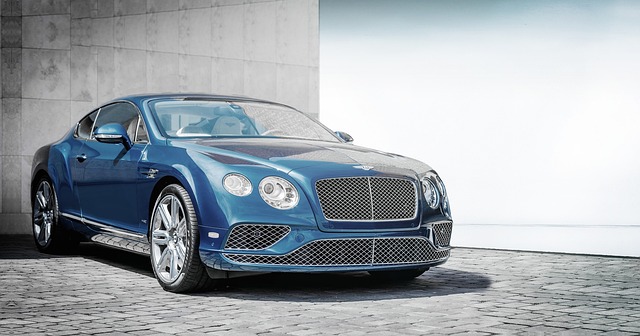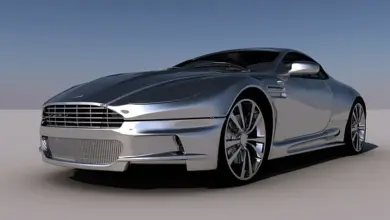How to Get Car Insurance for a Classic Car in the UK

Owning a classic car is a dream come true for many automotive enthusiasts. Whether it’s a vintage Jaguar E-Type, a 1960s Mini Cooper, or a rare Ford Mustang, these vehicles are more than just modes of transport—they’re pieces of history. However, insuring a classic car in the UK requires a different approach compared to standard modern vehicles. Classic cars often have unique needs due to their age, value, and usage patterns, making specialized insurance essential.
In this article, we’ll guide you through the process of getting car insurance for a classic car in the UK, covering everything from understanding your options to finding the best policy for your prized possession.
1. What Is Considered a Classic Car?
Before diving into insurance specifics, it’s important to understand what qualifies as a classic car. While definitions can vary slightly between insurers, most consider the following criteria:
- Age: Typically, a vehicle must be at least 15–20 years old to be classified as a classic.
- Rarity: Some insurers also take into account whether the car is rare or has historical significance.
- Condition: The car should be well-maintained and preserved, often used for shows, events, or leisure driving rather than daily commuting.
- Usage: Classic cars are usually driven sparingly, with annual mileage limits imposed by insurers.
If your vehicle meets these criteria, it’s likely eligible for classic car insurance.
2. Why Do You Need Specialized Classic Car Insurance?
Standard car insurance policies are designed for modern vehicles that depreciate over time. Classic cars, on the other hand, often appreciate in value, especially if they’re rare or meticulously restored. Here’s why specialized insurance is crucial:
- Agreed Value Coverage: Unlike standard policies that use market value (which decreases over time), classic car insurance typically offers “agreed value” coverage. This means the insurer agrees on a fixed value for your car upfront, ensuring you’re fully compensated in case of a total loss.
- Flexible Usage Terms: Classic car insurance accounts for limited usage, such as attending car shows or weekend drives, without penalizing you for low mileage.
- Specialized Protection: Policies may include perks like breakdown assistance tailored to older vehicles, spare parts coverage, or protection for modifications and restorations.
- Affordable Premiums: Since classic cars are driven less frequently and owners tend to be cautious, premiums are often lower than those for modern cars.
3. Types of Classic Car Insurance Policies
When shopping for classic car insurance, you’ll encounter several types of policies. Understanding the differences will help you choose the right one for your needs.
1. Agreed Value Policy
- Description: The insurer and policyholder agree on the car’s value at the start of the policy. In the event of a total loss, you’ll receive this agreed amount.
- Best For: Owners of high-value or appreciating classics who want certainty about compensation.
2. Market Value Policy
- Description: The insurer determines the car’s value based on current market conditions. This type is less common for classics but may apply to less valuable vehicles.
- Best For: Owners of moderately priced classics who prioritize affordability.
3. Third-Party Only Policy
- Description: Covers damage or injury you cause to others but not your own vehicle. It’s the minimum legal requirement for driving on UK roads.
- Best For: Rare cases where full coverage isn’t necessary, though it’s rarely recommended for classic cars.
4. Fully Comprehensive Policy
- Description: Provides the highest level of protection, covering damage to your car, third-party liability, theft, fire, and more.
- Best For: Most classic car owners seeking complete peace of mind.
4. Factors That Affect Classic Car Insurance Premiums
Several factors influence the cost of insuring a classic car. Being aware of these can help you find the best deal:
1. Vehicle Value
The agreed or market value of your car directly impacts your premium. Higher-value vehicles naturally cost more to insure.
2. Usage and Mileage
Classic cars are typically driven less than modern vehicles. Insurers often impose annual mileage limits (e.g., 2,500–7,500 miles) to qualify for reduced rates. Exceeding these limits can increase your premium.
3. Storage Arrangements
Where and how you store your classic car matters. Keeping it in a secure garage or purpose-built storage facility reduces the risk of theft or damage, leading to lower premiums.
4. Driving Experience
Your driving history and experience play a role. Experienced drivers with clean records are seen as lower-risk and may qualify for discounts.
5. Security Features
Installing additional security measures—such as immobilizers, tracking devices, or alarms—can lower your premium by reducing the likelihood of theft.
6. Membership in Classic Car Clubs
Many insurers offer discounts to members of recognized classic car clubs, such as the Federation of British Historic Vehicle Clubs (FBHVC). These memberships signal your commitment to preserving and maintaining your vehicle responsibly.
5. Steps to Get Classic Car Insurance
Now that you understand the basics, here’s a step-by-step guide to securing insurance for your classic car:
Step 1: Research Specialized Insurers
Not all insurers offer classic car policies. Look for companies specializing in classic or vintage vehicles, such as:
- Hagerty
- Lancaster Insurance
- Adrian Flux
- Footman James
These providers understand the unique needs of classic car owners and offer tailored coverage options.
Step 2: Gather Necessary Information
Prepare details about your vehicle and driving habits, including:
- Make, model, year, and condition of the car.
- Estimated value or restoration costs.
- Annual mileage and intended usage.
- Storage arrangements and security features.
Step 3: Obtain Quotes
Request quotes from multiple insurers to compare coverage and pricing. Be honest about your car’s value and usage to avoid issues during claims.
Step 4: Review Policy Terms
Pay close attention to:
- Agreed vs. market value coverage.
- Mileage limits and penalties for exceeding them.
- Exclusions for wear-and-tear or mechanical failures.
- Perks like roadside assistance or event coverage.
Step 5: Finalize Your Policy
Once you’ve chosen a provider, complete the application process and ensure all documentation reflects the agreed terms. Keep copies of your policy for reference.
6. Tips for Reducing Classic Car Insurance Costs
While classic car insurance is generally affordable, there are ways to further reduce your premiums:
- Join a Classic Car Club: Many insurers offer discounts to club members.
- Limit Annual Mileage: Agree to drive fewer miles to qualify for lower rates.
- Enhance Security: Install alarms, immobilizers, or GPS trackers to deter theft.
- Increase Excess: Opt for a higher voluntary excess to lower your premium (but ensure it’s affordable in case of a claim).
- Bundle Policies: If you have other vehicles or home insurance with the same provider, ask about multi-policy discounts.
- Maintain a Clean Record: Avoid traffic violations and accidents to retain your no-claim discount (NCD).
7. Common Mistakes to Avoid
When insuring a classic car, steer clear of these pitfalls:
- Underestimating Value: Don’t undervalue your car to save on premiums—it could leave you underinsured in case of a claim.
- Ignoring Usage Limits: Exceeding your mileage allowance can invalidate your policy or result in penalties.
- Skipping Security Upgrades: Failing to invest in proper storage or anti-theft measures increases risks and premiums.
- Choosing the Wrong Provider: Opting for a standard insurer instead of a specialist can lead to inadequate coverage.


